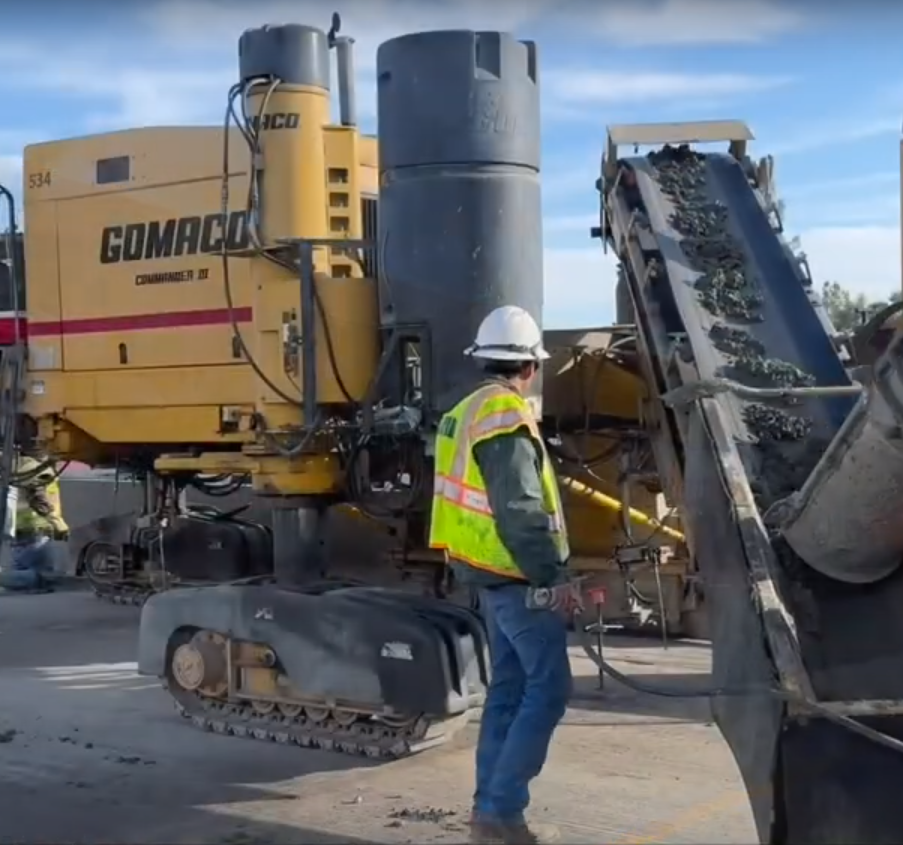Constructing Concrete Barrier Walls: The Slipforming method
Constructing Concrete Barrier Walls: The Slipforming method

We see them all along the freeways, concrete barrier walls, placed to help protect drivers. When constructing these walls, crews can use different methods. One method is called slipforming.
Crews with the I-10 Broadway Curve Improvement Project are using the slipforming method to construct concrete barriers in some areas of the project. When this method is used, a concrete machine continuously pours concrete into a desired form or shape such as the barrier wall shown below.
Before construction of a concrete barrier wall using the slip forming method begins, rebar cages are placed into the ground and then concrete is poured around the rebar, creating a footing or base for the new barrier wall. Crews then bring in a concrete machine. Concrete is fed into one side of the machine and then on the other side of the machine, the concrete is poured into a desired shape or form such as a concrete barrier wall and this is what is referred to as the “slipforming” method.
Once the wall is placed, crews smooth out and finish the wet concrete and then let it cure for 3-7 days.
View this Behind the Scenes video on slipforming.
Learn more about the I-10 Broadway Curve Improvement Project by visiting I10broadwaycurve.com or by downloading the free project mobile app called TheCurve.
